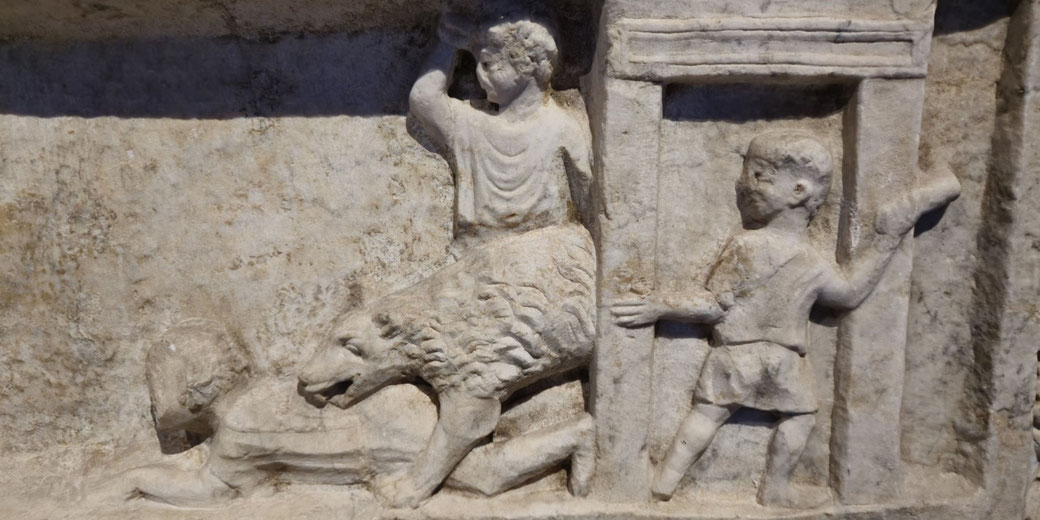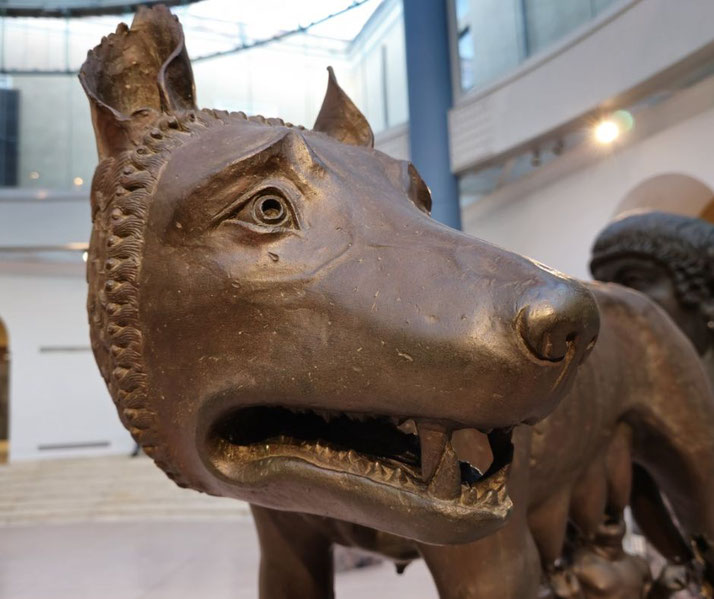The bizarre and sordid religious rites of Ancient Rome's Lupercalia Festival

At the height of winter, Romans gathered for a festival that blended blood sacrifice, which formed the ceremonial core, with wild nudity associated with fertility customs into one of the most shocking public events of the Roman calendar.
Known as Lupercalia and held each year on the 15th of February, the event took place at the foot of the Palatine Hill, near a cave that connected the city to its legendary beginnings.
For generations, the rituals had apparently endured through every phase of Roman history, from monarchy to empire.
The ancient origins of Lupercalia
Roman tradition claimed that Lupercalia came before the founding of the city itself, with many sources describing it as a surviving element of a more primitive and rural era.
Plutarch wrote that the ritual stemmed from a time when shepherds prayed to woodland deities for fertility and protection, long before any formal religious structure had developed.
The god Lupercus, who guarded flocks and warded off predators, received honours during the ceremony.
Later Roman writers sometimes equated him with the Greek god Pan due to shared themes of rustic wilderness, although Lupercus was more closely associated with the Roman god Faunus.
Some scholars also connected the rites to the Arcadian Lykaia and Sabine traditions that emphasised the sacred power of wolves.
For location, the Lupercal cave was a sacred spot, where Romulus and Remus were believed to have nursed the she-wolf.
The priests involved in the rites included two ancient groups, the Fabii and the Quinctilii, whose members were known as the Luperci.
They did not operate as priestly colleges in the later institutional sense. Instead they were early Roman curiae with old ritual roles.
Before they performed the ritual, they had observed purification rites that included fasting and ritual washing because they believed that divine forces had to be approached with respect and caution.
Archaeological work near the Palatine has uncovered an arched chamber which some scholars continue to believe to be the Lupercal itself, though the identification continues to be uncertain.
Each February, Romans conducted rituals intended to cleanse the city and prepare for the farming cycle.
The festival matched the seasonal purpose of purification found throughout the month of Februarius.
The very name of the month derived from the februa, strips of goat hide used during the rite.
It offered symbolic renewal and it aimed to secure real results because Romans had often hoped to influence nature to ensure fertility of crops, herds, and people.
By appealing to divine spirits associated with rural life, the city could guard itself against future misfortune.

The mythology behind the Lupercalia Festival
According to legend, Lupercalia honoured the she-wolf who had nursed the twin founders of Rome.
Writers such as Livy and Dionysius of Halicarnassus treated this tale as sacred history rather than as a fanciful invention.
In some traditions, Romulus created the Lupercalia to remember his own miraculous rescue and to bless his new city.
Over time, the gods associated with the festival took on wider symbolic meaning.
Lupercus, originally a rustic protector, became linked with fertility and masculine energy.
When the Luperci had sacrificed goats and dogs, they honoured both the reproductive and the protective aspects of divinity.
Goat hides were worn, and blood from both animals was used to anoint the priests.
As a result, the festival preserved legendary memory and a belief in sacred causality.
When citizens recreated the wildness of the city’s origin, they believed they could repeat the blessings of their past.
In their minds, the city’s strength depended on these early acts.
The strange rites held during the festival
At the centre of the ritual stood sacrifice. Each year on the 15th of February, the Luperci slaughtered a goat and a dog near the Lupercal cave.
After they had cut the animals open, they smeared the blood across each other’s foreheads with a knife.
Then they wiped the blood clean with wool dipped in milk.
Next, they prepared for the run. The Luperci had crafted leather thongs called februa from the hides of the sacrificed goats, which they used to strike those in their path.
They wore very little or nothing at all, and ran around the Palatine Hill in a wide circuit.
Women who wanted to conceive, or who hoped for easier childbirth, stood in the way and extended their hands to receive a blow.
Many Romans believed that the februa had sacred properties that passed on fertility or ensured health in childbirth.
The ritual required pain, exposure, and public display, but it made sense to those who accepted the gods as active participants in human fortune.
Public reaction was mixed. Some came to watch in reverence, while others treated it as entertainment.
Crowds gathered to cheer, laugh, or jeer. Street vendors, musicians, and matchmakers often turned the day into something like a public fair.
According to later Roman writers, young men and women might even be paired by lot for temporary unions, though this popular detail seems to reflect later Christian or early modern interpretations.
Importantly, Romans believed that the ritual helped purify the city. Physical suffering and symbolic violence, which accompanied public exposure, helped to drive out harmful influences.
Ritual and popular belief often worked together. In 44 BCE, during one of the most politically tense Lupercalia festivals in history, Mark Antony publicly offered Julius Caesar a diadem, an act that was reported by Plutarch and that was interpreted by many as a symbolic move toward monarchy.
Though Caesar declined, the incident revealed how tightly ritual, myth, and power could connect.
Why did the Lupercalia festival come to an end?
By the fourth century CE, Rome had changed. As Christianity grew in influence, the Church began to target festivals that reflected pagan values.
Public nudity and animal sacrifice offended Christian sensibilities because they recalled fertility rites which church leaders found objectionable.
Christian leaders condemned Lupercalia in sermons and tracts, calling it indecent and spiritually harmful.
Political change supported the Church’s goals because Constantine had endorsed Christianity and Theodosius had outlawed pagan worship in 391 CE, which led traditional Roman festivals to begin to vanish.
Since Church officials viewed the Lupercalia as a remnant of popular belief that encouraged immoral behaviour, their efforts to suppress it became more forceful as the Church’s authority increased.
In 494 CE, Pope Gelasius I issued a letter criticising the Lupercalia directly. The letter, which was addressed to Senator Andromachus, condemned the rites as empty and misguided but did not constitute an official legal ban.
Some later sources suggested that Gelasius replaced the festival with the Feast of Saint Valentine.
This idea, though widespread in modern accounts, has no clear basis in contemporary evidence and likely represents a later invention.
What is certain is that by the end of the fifth century, Lupercalia had disappeared from the Roman calendar.
No public celebrations occurred after that date, and no priests maintained its rites.
As the Lupercalia became part of memory, Roman authors continued to mention it to illustrate the strangeness of Rome’s pagan past rather than to encourage revival.
Later historians treated it as an example of how the Romans lived close to their gods, through blood and public display, which combined to display a fearless public devotion.
What do you need help with?
Download ready-to-use digital learning resources
Copyright © History Skills 2014-2025.
Contact via email
With the exception of links to external sites, some historical sources and extracts from specific publications, all content on this website is copyrighted by History Skills. This content may not be copied, republished or redistributed without written permission from the website creator. Please use the Contact page to obtain relevant permission.





